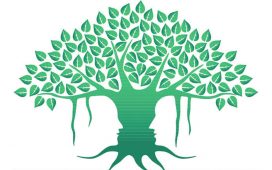Cats became human companions for the first time likely following mass cult ritual sacrifices of the furry felines in ancient Egypt, a pair of new studies suggest.
Ancient Egypt is well known to have been the cradle of human civilisation where feline domestication and worship were prevalent.
Several mummified cat remains and deities like the Egyptian goddess Bastet suggest that the furry felines and humans lived alongside each other in the region.
However, the exact circumstances under which cats became human companions was unknown.
Then, in 2001, scientists made a breakthrough discovery of a 9,500-year-old grave in Cyprus containing the remains of a human and a feline, hinting that cat domestication began in the Mediterranean island.
Researchers theorised that cats in and around Cyprus may have followed early farmers and gradually got accustomed to living with humans over thousands of years.
Now, two yet-to-be peer-reviewed DNA studies debunk this theory, finding that the Cyprus animal is actually a European wildcat, and not a domesticated cat.

This brings the focus back to Egypt as the origin site of cat domestication possibly as recent as 3000 years ago, researchers say.
“We demonstrate that domestic cats did not spread to Europe with Neolithic farmers, as previously thought,” they write.
Instead, scientists suspect that domesticated forms of wildcats were first sacrificed in mass cult rituals for Bastet before they were tamed to be pets.
Archaeologists say the Egyptian goddess of protection, pleasure, and good health, was first depicted with a lion’s head, but around the first millennium BC she became to be represented with the head of a cat.
“This transformation was coincident with the rise of cat sacrifice, whereby millions of free-ranging and specifically-reared cats were mummified as offerings to the goddess,” researchers write in the new study.
Excavations have also found that the temples and sanctuaries dedicated to Bastet are situated around vast ancient agricultural landscapes.
Such arable land would have had large numbers of rodents as well as their natural predators – wildcats.
“This would have provided the context for the tighter relationship between people and cats that led to the wildcat’s domestication, motivated by their newly acquired divine status,” scientists write.
Eventually, some ancient Egyptians likely welcomed the cats home as adorable pet companions, they say.
The domestication and spread of animals driven by cults is not uncommon.
For instance, previous research has shown that the spread of the fallow deer is linked to the Greek goddess Artemis, and of chickens to the cult of Mithras.
In the same way, the cult of Bastet could have facilitated the dispersal of cats, researchers say.
“Our results offer a new interpretative framework for the geographic origin of domestic cats, suggesting a broader and more complex process of domestication that may have involved multiple regions and cultures in North Africa,” scientists write.
They call for further research to pinpoint the original source populations of present-day domestic cats.











